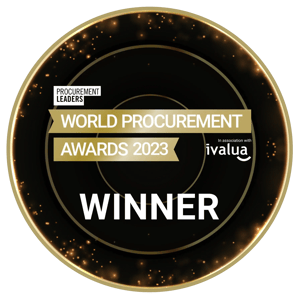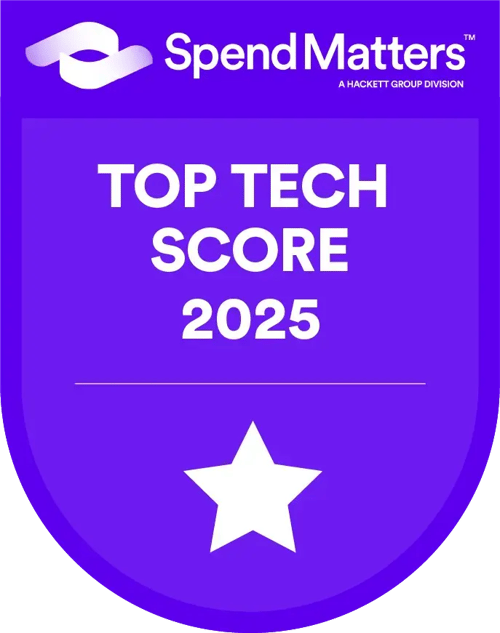Looking to reduce your organization's carbon footprint but struggling to find the best solution for your needs from the variety of carbon reduction solutions in the market?
A thorough Request for Proposal (RFP) can help you find one that is best aligned with your organization’s unique needs.
It is crucial to identify a solution that can best provide you with the value that matches your business goals and challenges.
At Sievo, we have 20 years of experience receiving RFPs from leading global companies. Based on accumulated best practices, we want to share our tips and tricks to help you craft an RFP that enables you to find the best solution to reach your carbon reduction goals.
Want to jumpstart your RFP process for CO2 Analytics? Be sure to download the Free RFP question template!
How To Create a CO2 Analytics RFP?
1. Pinpoint Your CO2 Analytics Needs
Start by clearly listing the features and services your ideal solution must have. This might include:
- Real-time tracking
- Predictive analytics
- CBAM reporting (Carbon Border Adjustment Mechanism)
- Scope 3 emissions reporting
- Integration with your existing procurement or ESG systems
This clarity allows you to focus on the vendors who can meet your specific requirements, thus enhancing the efficiency of the selection process and targeted decarbonization efforts.
2. Get Your Team On Board
A well-rounded RFP should integrate feedback from all pivotal stakeholders in your organization, as they might have unique requirements for measuring, managing, and reporting:
-
Procurement: Insights into supplier emissions
-
Finance: Cost-efficiency and reporting compliance
-
Sustainability: Progress tracking toward emission targets
By including the input of different stakeholders in the RFP, you guarantee a solution that covers all bases. This will ensure the evaluation process of solutions goes smoothly when all stakeholders' requirements are evaluated from the beginning.
3. Establish Clear Carbon Goals
Specify the goals your organization aims to achieve through CO2 Analytics. These could include:
- Identifying carbon hotspots in the supply chain
- Improving the data quality to produce more accurate calculation methods
- Engaging with more sustainable suppliers
When your goals are clear, vendors can propose solutions that directly address your needs, saving time and improving fit.
TDC NET had a clear goal: real-time visibility into supplier emissions. Their clear priority led them to a solution that fit their needs perfectly, enabling precise targeting of emissions hotspots and a 44% reduction in Scope 3 emissions over three years.
4. Clarify Your Evaluation Process
Communicate to vendors how their responses will be evaluated and the criteria you'll apply. It's also essential to give them an idea of the following stages in the selection process. Transparency promotes efficiency and sets clear expectations for all parties involved.
5. Ask Specific Questions
Avoid vague queries. Asking precise and clear questions encourages insightful responses from vendors.
Instead of general queries like "Describe your solution," focus on more detailed questions such as, "How does your software handle data collection from multiple sources?"
Such direct inquiries lead to actionable and comparative insights, making your job easier when comparing vendors to each other.
Take the Next Step Toward CO2 Reduction
Drafting an RFP is about more than just asking the right questions. It's a strategic tool to ensure the vendor's capabilities align with your needs.
With your RFP, you've initiated your journey toward carbon reduction. While on this path, consider exploring further insights on carbon analytics.
For a deeper dive, you might find our Sustainable Procurement 101 and demos helpful, offering both foundational understanding and practical applications.
FAQ
What is a CO2 Analytics RFP?
A CO₂ Analytics RFP is a formal document that organizations use to request proposals from vendors offering carbon tracking and emissions reduction solutions.
It helps your team compare solutions based on how well they align with sustainability goals, technical requirements, and internal stakeholder needs.
Why is an RFP important for carbon reduction?
An RFP gives structure to your selection process for the right solution and ensures you're asking the right questions from the start. This leads to better decisions and better results.
It helps you:
-
Define your organization’s carbon goals
-
Ask the right technical and compliance questions
-
Evaluate vendors based on data accuracy, integration, and reporting capabilities
What makes an RFP for CO2 analytics different from other software RFPs?
A CO2 Analytics RFP focuses on sustainability and emissions tracking, not just software features. A tailored RFP is important because these platforms need to:
-
Handle Scope 3 data
-
Comply with evolving regulations like the CBAM
-
Support supply chain-wide visibility
-
Integrate with procurement, finance, and ESG systems
These unique needs require more tailored RFP questions, which is exactly what our free template is designed to address.
How do I evaluate CO₂ analytics vendors?
Create a simple scoring system based on:
-
Fit with your emissions goals
-
Scope 3 and regulatory capabilities
-
Usability and stakeholder adoption
-
Data integration and transparency
-
Total cost and time-to-value
-1.jpg?width=150&name=admin-ajax%20(1)-1.jpg)

